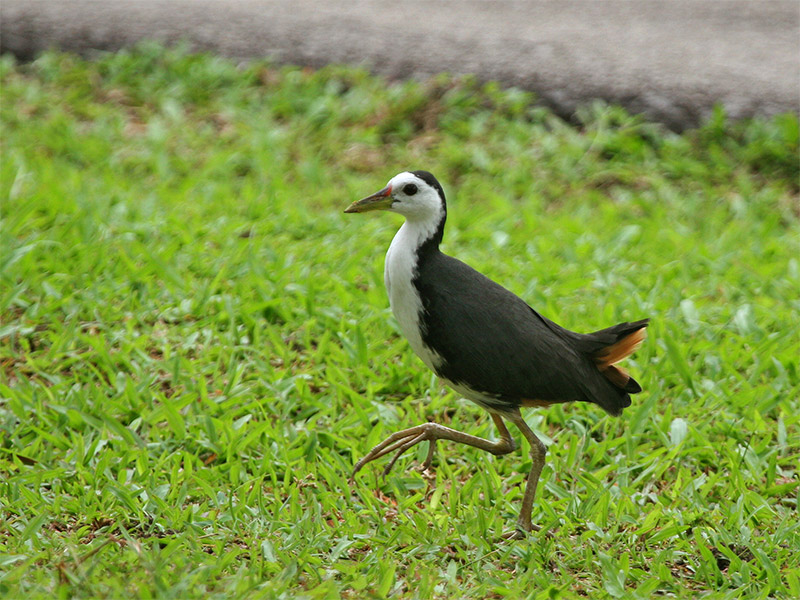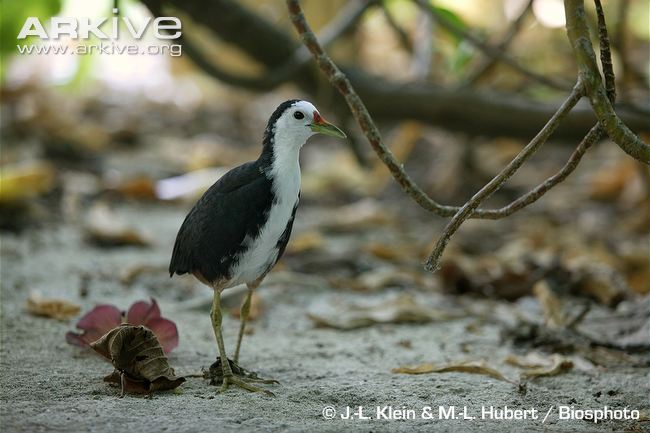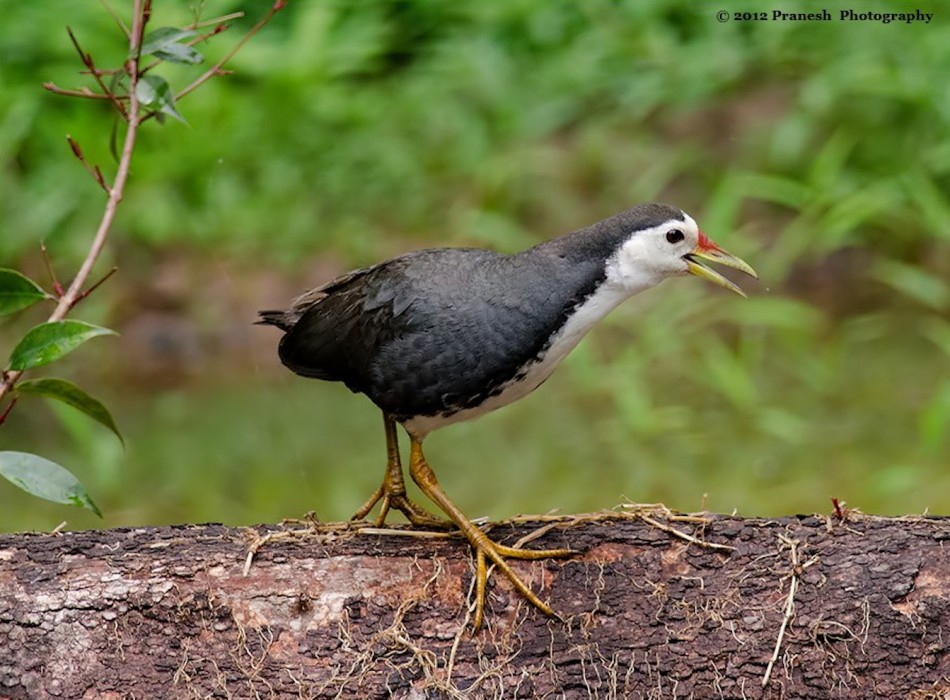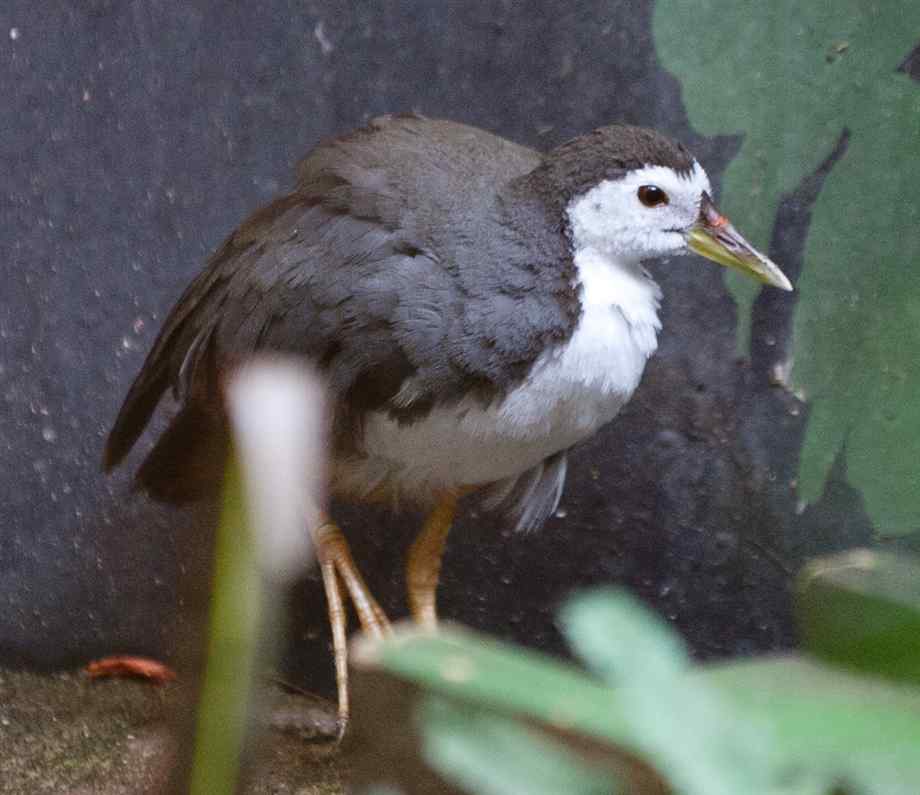
Amaurornis phoenicurus
SUBFAMILY
Rallinae
TAXONOMY
Gallinula phoenicurus Pennant, 1769, Sri Lanka. Four subspecies
recognized.
OTHER COMMON NAMES
French: Rвle а poitrine blanche; German: WeiЯbrust-Kielralle;
Spanish: Gallineta Pechiblanca.
PHYSICAL CHARACTERISTICS
11–13 in (28–33 cm); 5.8–11.6 oz (165–328 g). Dark upperparts,
white face and underparts, tawny-rufous rear underparts,
and yellow bill and legs. Juvenile duller. Chick black and fluffy.
DISTRIBUTION
A. p. phoenicurus: Pakistan and India east to Japan, and south
through southeastern Asia to Sundas; northern populations
winter to the south, reaching Arabia; A. p. insularis: Andaman
and Nicobar Island; A. p. midnicobaricus: central Nicobar Island;
A. p. leucomelanus: Sulawesi, western Moluccas, Lesser Sundas.
HABITAT
Marshes, grass, forest, scrub, and mangroves.
BEHAVIOR
Not particularly shy. Perches, climbs, and swims well. Territorial
when breeding. Characteristic calls include roars, grunts,
cackles and croaks; often vocal at night.
FEEDING ECOLOGY AND DIET
Takes invertebrates, small fish and some plant material. Forages
on land and in water.
REPRODUCTIVE BIOLOGY
Monogamous. Breeds all months, mainly during rains. Nest a
cup of twigs, stems, and leaves, close to the ground and near water.
Eggs three to nine; color is dull brownish to white/gray with
reddish spots and marks. Incubation 20 days by both parents.
CONSERVATION STATUS
Not threatened. Common to local over much of its range,
which is expanding northeast. Uses humanmade habitats, even
in built-up areas.
SIGNIFICANCE TO HUMANS
None known.
Other popular Animals
Photo Gallery of - White-breasted waterhen




 Animalia Life
Animalia Life